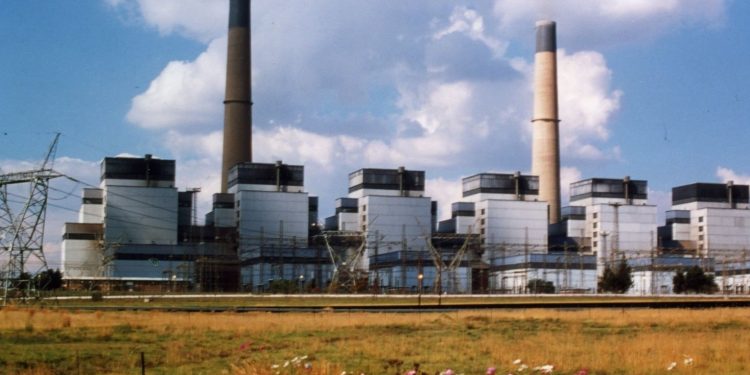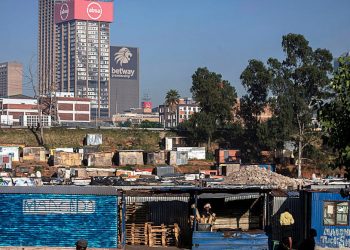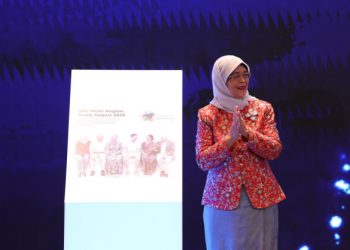Friday, 21 November 2025: The national power system remains stable, supported by sustained improvements in generation performance as a direct result of the ongoing implementation of the Generation Recovery Plan supporting economic growth.
The Energy Availability Factor (EAF)—which measures the percentage of time the generation fleet is available to produce electricity—stands at 70.06% month-to-date, a notable increase of 7.04% from 63.02% in the same period last year. Year-to-date, EAF further increased to 63.63%, with the fleet achieving or exceeding the 70% mark on 39 occasions. These figures underscore both recovery and sustained improvement in EAF performance, reinforcing energy security and grid stability.
The continued improvement in EAF has significantly reduced Eskom’s reliance on costly diesel generation, allowing the company to focus more on cost-effective primary energy sources. Additionally, 11 generation units, equivalent to 4 294MW, are currently on cold reserve due to excess capacity.
No Open Cycle Gas Turbines (OCGTs) were used in the past week, underscoring the financial and operational benefits of the Eskom turnaround.
Year-to-date, diesel expenditure remains consistently below budget.
For the period 14 to 20 November 2025, the average Unplanned Capability Loss Factor (UCLF)—which measures the percentage of generation capacity lost due to unplanned outages—remains below the 20% mark, at 17.54%, a significant reduction of 5.11% from 22.65% during the same period last year.
The average Planned Capacity Loss Factor (PCLF) for 14 to 20 November 2025 stands at 13.31%, lower than the 14.08% recorded last year. This planned maintenance aligns with Eskom’s long-term maintenance schedule and ongoing efforts to enhance plant reliability and operational consistency.
Between 14 and 20 November 2025, Eskom recorded an average of 8 441MW in unplanned outages, an improvement from 10 817MW during the same period last year. This year-on-year reduction of 2 376MW in breakdowns highlights the growing reliability and resilience of the generation fleet.
South Africa has now experienced 189 consecutive days without an interrupted supply, with only 26 hours of loadshedding recorded in April and May during this financial year.
To maintain a stable electricity supply, Eskom will bring 1 630MW of generation capacity online ahead of the evening peak on Monday, 24 November 2025. Today’s evening peak demand is forecast at 23 668MW, supported by 28 545MW of available capacity, giving the system a healthy margin above current demand.
Eskom published the Summer Outlook on 5 September 2025, covering the period 1 September 2025 to 31 March 2026, which projects no loadshedding due to sustained improvements in plant performance from the Generation Recovery Plan.
Key Performance Highlights
- Year-to-date, the UCLF further reduced to 24.52%, reflecting a week-on-week improvement of approximately 0.21% and remaining below last year’s 25.11%.
- Planned maintenance averaged 5 347MW, accounting for 11.39% of total generation capacity, higher than last week’s 11.33% and marginally higher than the 11.38% over the same period last year.
- The year-to-date EAF is steadily increasing, currently sitting at 63.63%, an increase from last year’s 63.02% in the same period as a result of reduced unplanned outages and additional capacity.
- Between 1 April and 20 November 2025, Eskom generated 1 024.47GWh from OCGT plants, incurring diesel costs of R6.079 billion, slightly higher than the 1 019.44GWh produced during the same period last year. Importantly, diesel consumption has been declining steadily month-on-month since May 2025.
- The year-to-date OCGT load factor further decreased to 5.34%, a 0.16% improvement from the previous week but remains slightly above the 5.32% recorded during the same period last year.
Progress Toward Ending Load Reduction
While system stability continues to improve, illegal connections and meter tampering remain a concern, damaging infrastructure and posing serious safety risks. Load reduction remains a temporary measure in high-risk areas to protect communities and infrastructure.
Eskom began implementing its phased programme to eliminate load reduction ahead of its official launch on 13 November 2025 in Sandfontein village, North West. The initiative, which will continue until 2027, is expected to benefit approximately 1.69 million of Eskom’s 7.2 million customers across 971 feeders, with particularly high volumes in Gauteng, Limpopo, Mpumalanga, and KwaZulu-Natal.
The programme’s main initiatives focus on extending Free Basic Electricity to additional households, rolling out smart meters to better manage demand and reduce equipment strain, and introducing Distributed Energy Resources (DERs) to strengthen supply in high-demand and remote areas.
Progress on the Key Interventions
- To date, 52 082 smart meters have been installed across all provinces on feeders subject to load reduction, against a target of 577 000 smart meters by 2026, with full completion expected by 2027. These installations aim to enhance demand management and reduce equipment strain. Additional measures are being rolled out to meet targets and remove compliant feeders from load reduction.
Eskom calls on communities to support these initiatives by reporting illegal connections, using electricity responsibly, and protecting infrastructure. Through technology, infrastructure upgrades, and public cooperation, Eskom is building a safer, smarter, and more reliable power system for all South Africans.
Any illegal activity affecting Eskom’s infrastructure can be reported to the Eskom Crime Line at 0800 112 722 or via WhatsApp at 081 333 3323.
Eskom will provide its next update on Friday, 28 November 2025, or communicate any significant developments as they occur.
ENDS













